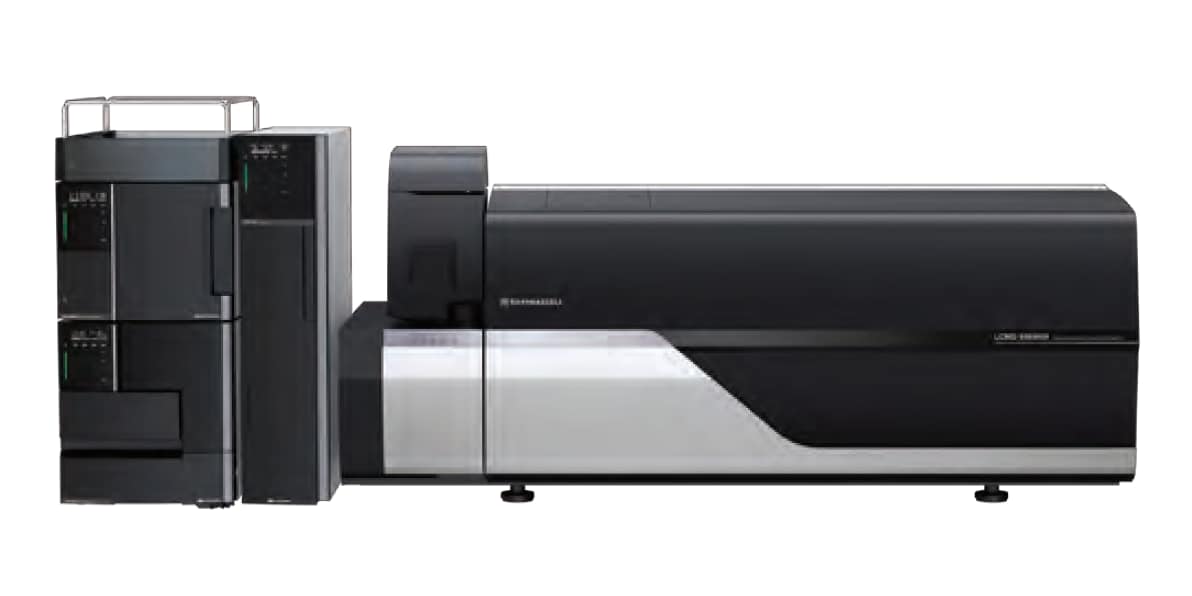Solutions for the Analysis of Per- and Polyfluoroalkyl Substances (PFAS)
Per- and polyfluoroalkyl substances (PFAS) are a group of persistent and harmful chemicals that can be found in a variety of environmental samples, including drinking water, wastewater, biosolids, soils, air, animal tissue. With concerns rising quickly about the health risks associated with PFAS exposure and developing regulation across the world, it is important to ensure proper monitoring of these chemicals in the environment. Shimadzu offers a variety of analytical solutions for PFAS analysis, including standardized methods, such as those published by EPA (EPA 537.1, 533, 8327, 1633) and ASTM (D8421, D7968) and new analytical workflows. These solutions will enable your success for monitoring PFAS and protecting public health.
Resources
Shimadzu's LC-MS/MS methods for the analysis of PFAS in the environmental matrices are easy to use. They have been vetted to provide high quality results at a low cost, for EPA methods for drinking water (EPA 537.1, EPA 533), wastewater (EPA 1633) and more. Compare here Shimadzu’s LC-MS/MSs and chooses the choice of speed, sensitivity and resolution to meet the demands of high-throughput routine PFAS analysis and/or more specialized applications.
PFAS Analysis Demystified
Efficiently quantifying the presence of PFAS in different types of environmental samples can be overwhelming, and three frequent issues deepen this challenge:
- Ruling out the LCMS instrument as the source of the PFAS contamination
- Streamlining the data process and review for optimal turnaround times of PFAS results
- Accessing support resources to expand the ever-growing workflows for PFAS
This video presents vetted LC/MS/MS methods and software designed to streamline PFAS analytical workflows by minimizing these three bottlenecks in the process.
/how-to-epa-guides.png)
Get your lab ready: How-to Guides for PFAS analysis
View our How-to guides for EPA 537.1 and EPA 533 to learn::
- How to set up your Lab for PFAS analysis
- What you need to prepare before running your first PFAS samples
- How to prepare your samples for PFAS analysis
- How to analyze your PFAS samples in LC-MS/MS
Meet your expert partners for PFAS Analysis
Environmental labs across the country – and around the world – are ramping up their response to deliver analysis of legacy and emerging PFAS compounds, with lower detection limits, and shorter turn-around times. To make this process as effective and efficient as possible, these labs are leaning on their technology partners to help with instrument selection, set-up, method development, and training. Watch these four videos to meet some of the Shimadzu experts working with customers now to:
- Provide pre-optimized methods for PFAS analysis (EPA 533, 537.1)
- Troubleshoot and streamline workflows
- Incorporate PFAS analysis into routine operations
- Ensure easy access to the latest PFAS monitoring tools
High-performance LC/MS and LC-MS/MS Instruments
Shimadzu’s offers a complete line-up of high-performance LC/MS and LC-MS/MS instruments for the ultimate in ultrafast LC-MS analysis without compromising sensitivity or durability for the analysis of PFAS and other organic contaminants. Learn about each of these platforms here.
Applications
Access below our featured applications and other documents that will help you to streamline your PFAS analysis workflows.
EPA Method 1633: Method Detection Limits of Per-and Polyfluoroalkyl Substances (PFAS) in Aqueous Matrices using the Triple Quad LCMS-8060NX
Regulations for controlling the occurrence of PFAS in different environmental samples are developing fast. With the final approval of EPA method 1633, environmental laboratories have now a new standardized method to respond to the demand for PFAS analysis in complex environmental samples, such as wastewater, solid, biosolids, and tissue. Discover how to achieve reproducible results and quantification 10x lower than the EPA’s Limit of Quantitation for the analysis of PFAS wastewater according to EPA Method 1633.



/pfas-infographic-thumb.png)
/pfas-methods-poster-thumb.png)
/pfas-faqs-thumb-330px.png)
/pennsylvania-dep-video-poster.png)
/lcms-method-package-pfas-drinking-water-thumb.png)
/request-info-tile.png)
/pfas-expert-videos-thumb.png)

/ssi-lcms-154.jpg)